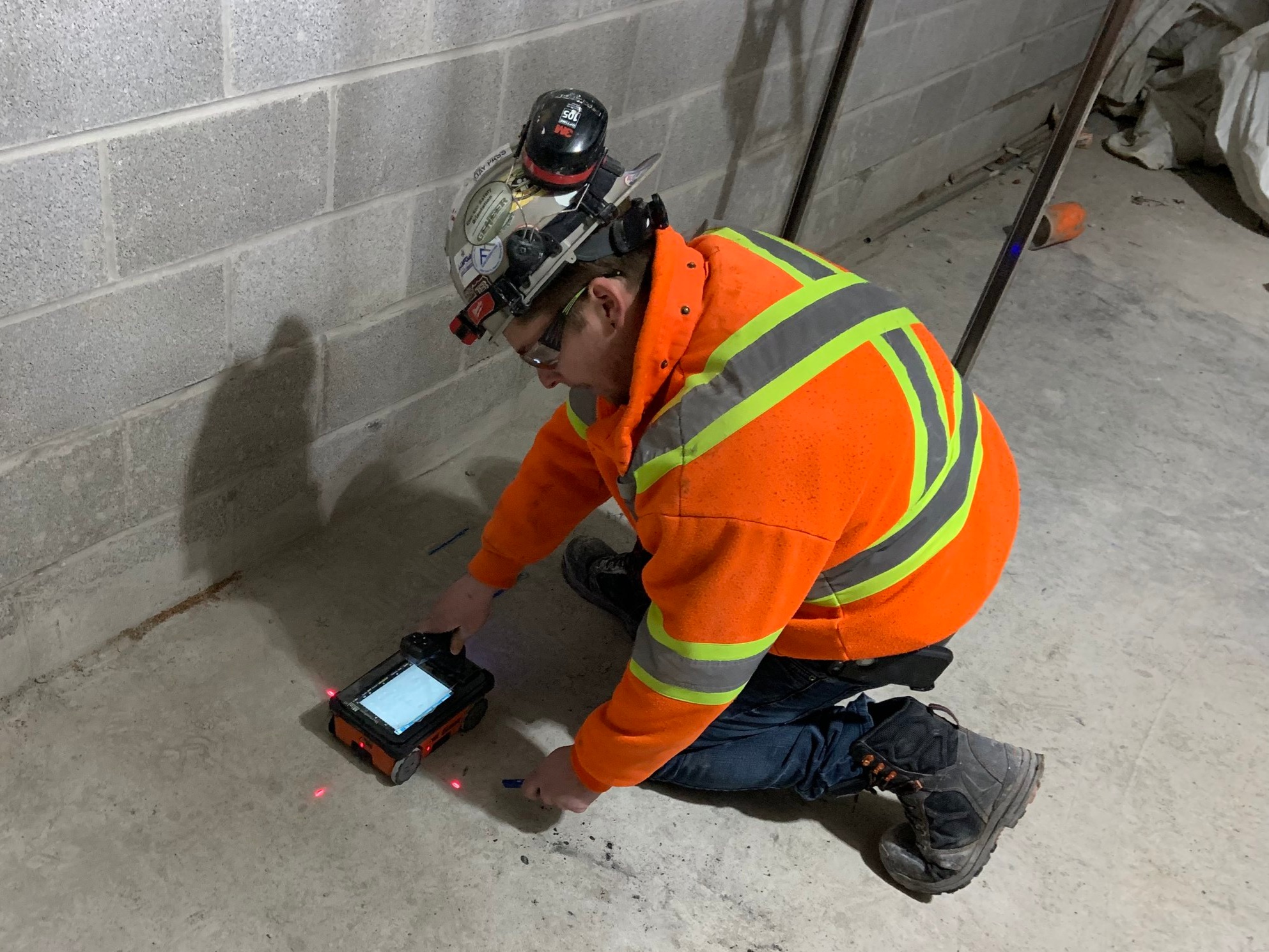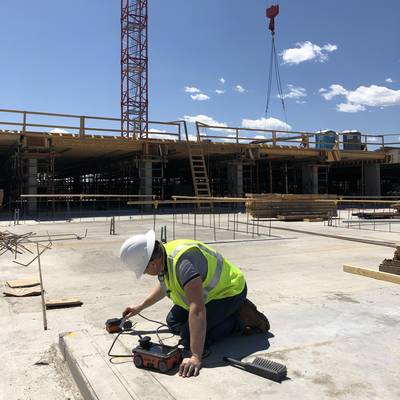RainierGPR Concrete Scanning: Ingenious Solutions for Complex Tasks
RainierGPR Concrete Scanning: Ingenious Solutions for Complex Tasks
Blog Article
The Relevance of Exact Concrete Scanning in Detecting Underground Hazards
The capacity to accurately identify and map these below ground risks is not just an issue of convenience but a crucial facet of guaranteeing the security of both construction workers and the stability of the job itself. By deploying sophisticated scanning innovations and methodologies, experts can discover concealed risks, prevent expensive problems, and inevitably pave the means for smoother and safer construction ventures.
Advanced Scanning Technologies for Discovery
Advanced radar systems are transforming the area of underground detection by giving unequaled precision and performance. These innovative scanning innovations use ground-penetrating radar (GPR) to produce thorough images of subsurface structures, using insights right into what lies underneath the surface with exceptional clarity. By emitting high-frequency pulses into the ground and gauging the reflections, radar systems can recognize variants in product structure and find underground dangers such as pipes, cords, and gaps.
One of the crucial advantages of these advanced radar systems is their non-invasive nature, permitting for comprehensive examinations without triggering damages to the existing structures. This not only makes sure the safety and security of the surrounding setting yet also decreases the requirement for expensive repairs or disturbances to recurring construction projects. Additionally, the real-time data offered by these scanning innovations allows quick decision-making and boosts general job efficiency.
Value of Subsurface Mapping

Exact subsurface mapping aids in avoiding pricey damages to existing below ground facilities, lowering the risk of crashes, and maintaining project timelines. It makes it possible for job supervisors to make informed decisions regarding website preparation, tools deployment, and source allowance. Furthermore, subsurface mapping enables for better coordination amongst different groups servicing a project and assists in following regulatory demands connected to below ground energy discovery.
Mitigating Threats in Building And Construction Projects
Effective danger mitigation techniques are vital for making certain the success and safety of construction tasks. Recognizing and addressing prospective dangers prior to they rise is critical in maintaining task timelines, spending plans, and general high quality. One essential element of mitigating risks in building and construction projects is thorough preparation and analysis at the initial phases. Conducting comprehensive website studies, including precise concrete scanning for below ground hazards, can assist in identifying possible issues at an early stage. Making use of sophisticated innovations like ground-penetrating radar and electro-magnetic induction can aid in spotting utilities, rebar, or other obstructions that might pose threats during building and construction.
Furthermore, establishing clear interaction channels amongst all project stakeholders and making certain rigorous adherence to safety and security procedures are important elements of imp source risk mitigation. Normal examinations, quality control actions, and tracking of job progress can assist in identifying and dealing with any arising threats without delay. In addition, having site link contingency strategies in position for unanticipated challenges can significantly decrease the effect of interruptions on the job. By proactively executing durable threat mitigation approaches, building and construction jobs can decrease delays, expense overruns, and safety and security occurrences, ultimately causing effective job outcomes.

Stopping Expensive Problems and Delays
To reduce monetary losses and job obstacles, reliable techniques need to be implemented to stop costly damages and delays in building and construction tasks. One essential method to achieve this is by performing comprehensive concrete scanning before any type of excavation job starts. By making use of sophisticated scanning innovations such as ground-penetrating radar (GPR) and electro-magnetic induction, construction groups can accurately identify below ground dangers like rebar, avenues, and various other utilities. Identifying these obstructions early assists in planning the project format a lot more effectively and avoiding prospective damages throughout excavation.
In addition, investing in training programs for building employees on the value of concrete scanning and secure excavation techniques can dramatically minimize the threat of delays and accidents. Clear communication channels in between project supervisors, designers, and on-site workers are likewise vital to make certain that everybody understands the prospective hazards and follows the required procedures to avoid expensive damages. By prioritizing proactive measures like concrete scanning and advertising a culture of safety and awareness, building and construction jobs can reduce the economic influence of unexpected below ground blockages and stay clear of expensive hold-ups.
Ensuring Safety And Security of On-Site Employee
By focusing on proactive procedures such as thorough training programs and clear interaction channels, building tasks can make sure the safety of on-site personnel amidst the prospective threats discovered via concrete scanning. Proper training equips workers with the expertise and abilities required to browse building and construction sites securely, specifically when risks are identified with scanning procedures. Training needs to cover danger acknowledgment, emergency procedures, and the proper use of personal safety tools to mitigate risks effectively.
In addition, establishing clear communication channels is crucial for distributing info concerning recognized threats promptly. This makes certain that all on-site workers know possible threats and can take needed safety measures to prevent accidents. Routine safety and security briefings, toolbox talks, and constant updates regarding scanning results aid keep every person educated and positive in keeping a secure visit this page workplace.
Additionally, applying rigorous adherence to safety methods and laws, conducting routine safety and security audits, and promoting a society of safety and security consciousness amongst workers are crucial components in guaranteeing the well-being of on-site employees during building tasks - RainierGPR Concrete Scanning. Proactive safety procedures not just safeguard employees from injury but likewise contribute to the general success and efficiency of the job
Final Thought
Finally, specific concrete scanning plays an essential duty in finding underground dangers. Making use of sophisticated scanning technologies and subsurface mapping aids minimize threats in building and construction jobs, protecting against expensive damages and hold-ups. By making certain the safety and security of on-site personnel, precise scanning can substantially enhance the effectiveness and success of building and construction procedures. It is essential for construction companies to focus on using specific scanning techniques to lessen possible risks and ensure a smooth construction procedure.
By proactively executing robust risk mitigation methods, building and construction projects can decrease hold-ups, expense overruns, and safety and security cases, inevitably leading to successful job results. - RainierGPR Concrete Scanning
To reduce monetary losses and task obstacles, effective methods have to be applied to avoid expensive damages and hold-ups in construction projects. By focusing on proactive measures like concrete scanning and promoting a culture of safety and understanding, construction jobs can decrease the economic impact of unexpected below ground blockages and stay clear of costly hold-ups.
By focusing on proactive measures such as extensive training programs and clear interaction channels, building tasks can make sure the safety of on-site personnel amidst the prospective risks discovered with concrete scanning. Making use of advanced scanning technologies and subsurface mapping helps minimize dangers in building jobs, protecting against pricey damages and hold-ups.
Report this page